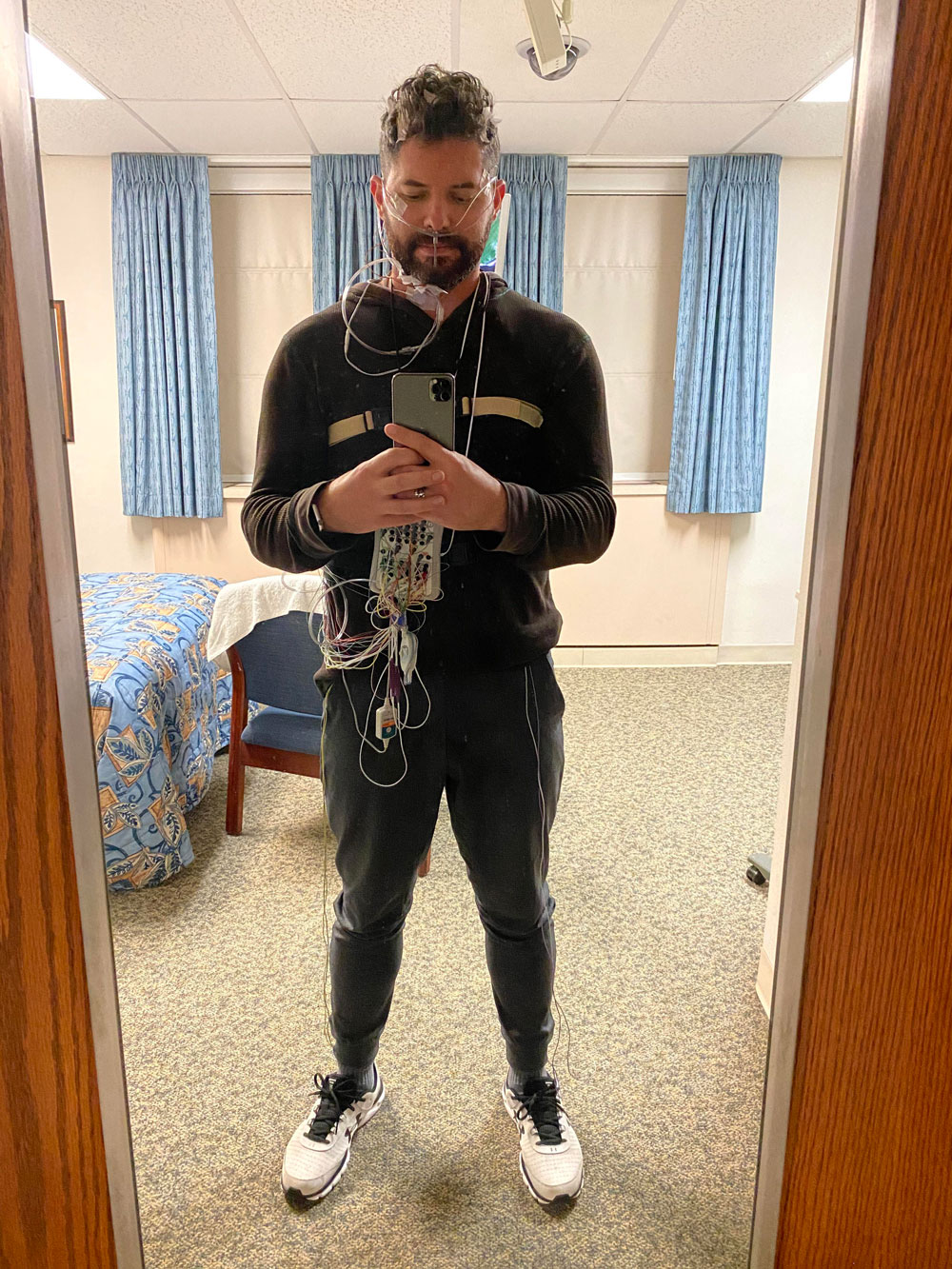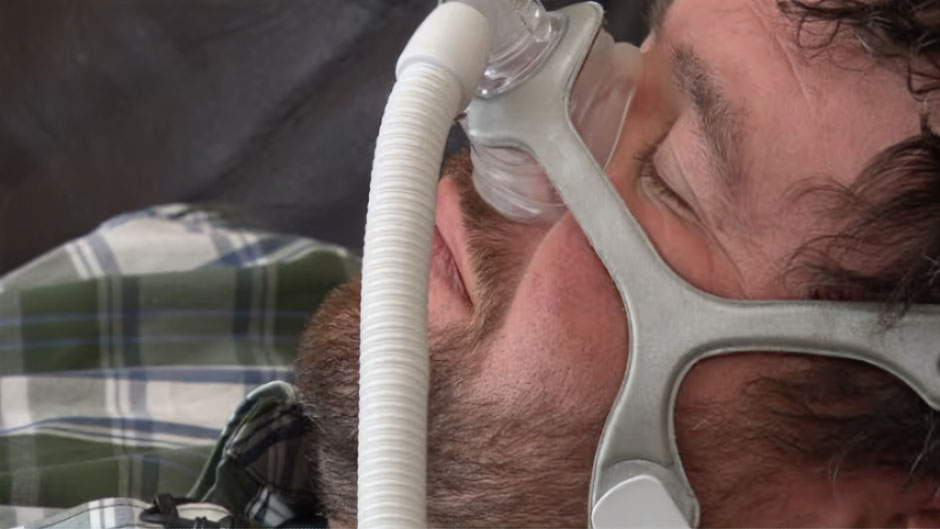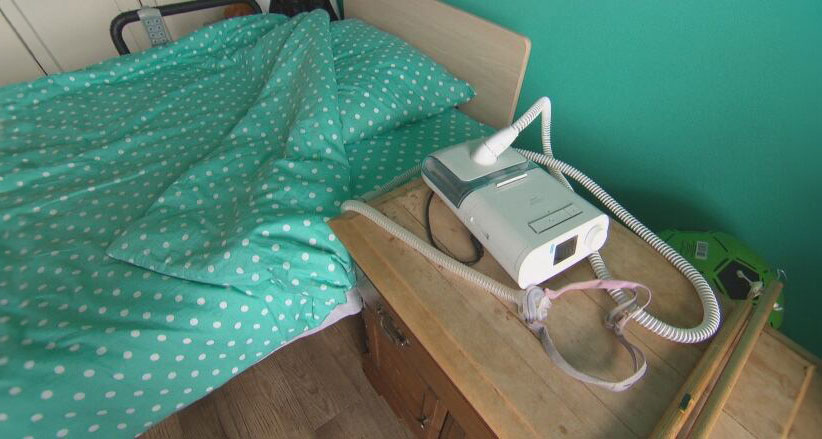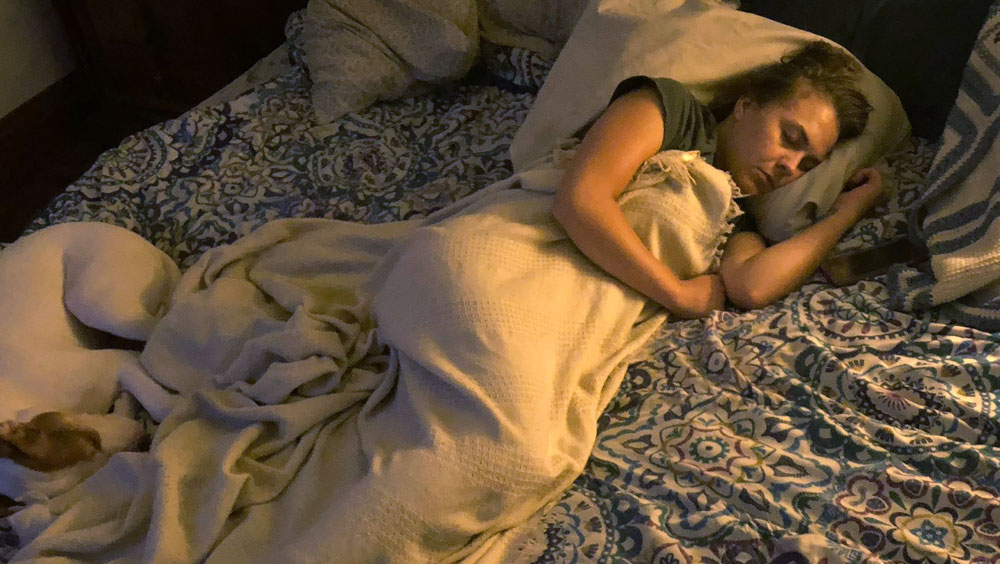Every night, millions of people around the world drift into a seemingly peaceful slumber, unaware that a hidden danger may be lurking in the shadows of their dreams. Sleep apnea, a widely prevalent yet often undiagnosed sleep disorder, has been linked to a range of serious health risks, and in some cases, even death.
As we delve into the enigmatic world of sleep apnea, we will explore the mechanisms behind this condition, its potentially life-threatening consequences, and the importance of understanding, diagnosing, and treating it. Are you or your loved ones at risk? Let's unmask the silent threat of sleep apnea and discover if it can truly be a silent killer.

What Is Sleep Apnea?
Sleep apnea is a sleep-related condition marked by recurring interruptions in breathing during slumber. These interruptions, medically referred to as apneas, frequently transpire throughout the night, causing a decrease in the body's oxygen levels. There are several types of sleep apnea, with obstructive, central, and complex sleep apnea being the most common.
Types Of Sleep Apnea
Sleep apnea can happen in three ways: Obstructive Sleep Apnea (OSA), Central Sleep Apnea, and Complex Sleep Apnea. Obstructive Sleep Apnea, the most common type, is when your throat muscles block your airway as you sleep. Central Sleep Apnea is rarer and happens when your brain doesn't tell your breathing muscles to work properly. Complex Sleep Apnea is a mix of both. Each type needs different treatment, so seeing a doctor is important if you have sleep problems.
- Obstructive Sleep Apnea (OSA): Obstructive Sleep Apnea (OSA) stands as the most commonly reported variation of sleep apnea. This condition arises when the muscles in the throat relax to an excessive degree during sleep, temporarily obstructing the airway. Consequently, this blockage results in episodes of interrupted breathing and is frequently accompanied by loud snoring.
- Central Sleep Apnea: Central sleep apnea is less common and differs from OSA in that it involves a failure of the brain to transmit the proper signals to the muscles responsible for breathing. Unlike OSA, there is no physical obstruction in the airway, but breathing still becomes irregular and may pause for brief periods.
- Complex Sleep Apnea: Complex sleep apnea, recognized as treatment-emergent central sleep apnea occurs as a hybrid of obstructive and central sleep apnea components. This condition is typically identified in individuals who initially presented with Obstructive Sleep Apnea (OSA) but subsequently developed central sleep apnea following treatment.
Prevalence And Common Symptoms
Mild sleep apnea is more widespread than one might think, affecting people of all ages. Its prevalence is often underestimated because many cases go undiagnosed. Common symptoms include loud snoring, daytime fatigue, restless sleep, morning headaches, difficulty concentrating, and a tendency to fall asleep during the day. These symptoms can take a toll on one's quality of life and, if left untreated, may lead to severe health issues, including potentially life-threatening complications.
Causes And Risk Factors

Sleep apnea can be caused by a few key things: Being overweight, especially with a thicker neck, can block your airway when you sleep. Getting older, being a man, or having sleep apnea in your family also increases your risk. Understanding these factors is important to know if you might be at risk.
- Anatomy and Obesity: One of the primary causes of obstructive sleep apnea is excess weight, particularly fat deposits in the upper airway. This can narrow the airway and make it more susceptible to collapse during sleep.
- Genetics: Family history may play a role in sleep apnea. Genetic factors can influence the structure and function of the airway and may increase the risk of developing the disorder.
- Age: Sleep apnea becomes more common as people age, although it can affect individuals at any age. Changes in muscle tone and decreased reflexes may contribute to its development with age.
- Gender: Men are more likely to develop sleep apnea than women, but the risk in women increases if they are overweight, and it may also be linked to hormonal changes (e.g., menopause).
- Neck Circumference: People with a thicker neck circumference may have a narrower airway, which can increase the risk of obstructive sleep apnea.
Conditions And Lifestyle Habits That Increase The Risk
Your habits and health can affect your risk of sleep apnea. Smoking and drinking alcohol can make it harder to breathe at night. A stuffy nose from allergies or a cold can worsen it too. Health problems like heart disease or diabetes, not exercising enough, and taking certain meds, like sleeping pills, can all increase your chances of getting sleep apnea.
- Smoking and Alcohol: Smoking irritates the airway, while alcohol and sedative use can relax the throat muscles, making it more likely to collapse during sleep.
- Nasal Congestion: Chronic nasal congestion or obstruction can make it harder to breathe through the nose, potentially leading to sleep apnea.
- Medical Conditions: Underlying health issues like hypertension, diabetes, and heart failure are associated with an increased risk of sleep apnea. Chronic nasal congestion, polycystic ovary syndrome (PCOS), and prior strokes may also contribute.
- Sedentary Lifestyle: Lack of physical activity can lead to weight gain and worsen the symptoms of sleep apnea.
- Use of Certain Medications: Some medications, such as tranquilizers, opioid painkillers, and high doses of sleep medicine, may increase the risk of sleep apnea.
Recognizing Susceptibility

While sleep apnea can affect anyone, individuals who are overweight, male, over the age of 40, and have a family history of the disorder are more likely to be susceptible. However, it's important to note that it can also occur in individuals who do not fit these categories, making it crucial to be aware of the common risk factors and symptoms to seek appropriate diagnosis and treatment.
The Impact On Health
Untreated sleep apnea can have a profound and far-reaching impact on an individual's overall health. Some of the key dangers associated with this condition include:
- Hypertension (High Blood Pressure): Sleep apnea is strongly linked to hypertension, and repeated nighttime awakenings and oxygen desaturation contribute to increased blood pressure. If left untreated, it can be a risk factor for heart disease, stroke, and other cardiovascular issues.
- Heart Disease: The frequent drops in blood oxygen levels and the stress placed on the heart can lead to a higher risk of developing heart conditions, such as arrhythmias, coronary artery disease, and heart failure.
- Type 2 Diabetes: Sleep apnea has been associated with insulin resistance and an increased risk of developing type 2 diabetes. The exact mechanisms are not fully understood, but the relationship between the two is well-established.
- Weight Gain: Sleep apnea and obesity often go hand in hand, with one exacerbating the other. Obesity can contribute to the development of sleep apnea, and the sleep disruptions caused by the condition may make it harder for individuals to lose weight.
- Mood Disorders: Untreated sleep apnea can lead to mood disturbances such as irritability, depression, and anxiety. The chronic fatigue and daytime sleepiness experienced by individuals with sleep apnea can significantly affect their emotional well-being.
- Cognitive Impairment: Sleep apnea can impair cognitive function, leading to difficulties with memory, concentration, and decision-making. This can impact work and daily life.
- Increased Risk of Mental Health Conditions: There is evidence suggesting that sleep apnea may increase the risk of developing mental health conditions, including mood disorders.

Daytime Fatigue and Accidents
Sleep apnea, particularly obstructive sleep apnea, can lead to excessive daytime sleepiness. This results from the frequent awakenings and interruptions in sleep caused by apneas and oxygen desaturation. The consequences of excessive daytime sleepiness include:
- Increased Accident Risk: Individuals with sleep apnea are more prone to accidents, both on the road and in the workplace. Excessive sleepiness impairs reaction times, attention, and decision-making, making it dangerous to drive or operate heavy machinery. This can lead to car accidents and workplace incidents.
- Decreased Cognitive Function: Sleep apnea can impact cognitive function and lead to memory problems, reduced concentration, and impaired problem-solving abilities. This cognitive impairment can affect an individual's ability to perform everyday tasks efficiently.
- Impact on Productivity and Quality of Life: In the workplace, untreated sleep apnea can result in decreased productivity and an increased risk of errors. People with sleep apnea may struggle to stay awake during meetings, fall asleep at their desks, or find it challenging to complete tasks. This can lead to job-related problems and reduced overall quality of life.
Life-Threatening Consequences
Sleep apnea, if left untreated, can indeed lead to life-threatening events and complications. Some of the most critical life-threatening consequences include:
- Hypertension: Untreated sleep apnea is a significant risk factor for high blood pressure (hypertension). Over time, hypertension can increase the likelihood of heart attacks, strokes, and other heart-related problems.
- 2. Heart Disease: The repeated drops in blood oxygen levels and the added stress on the heart caused by sleep apnea can contribute to heart disease, including arrhythmias, coronary artery disease, and heart failure.
- Stroke: Sleep apnea has been linked to an increased risk of stroke. The sleep-related interruptions in breathing and reduced oxygen supply to the brain can raise the likelihood of both ischemic and hemorrhagic strokes.
- Sudden Cardiac Death: In some cases, sleep apnea can lead to sudden cardiac death, particularly among individuals with underlying heart conditions. The episodes of oxygen desaturation and added strain on the heart may trigger life-threatening cardiac arrhythmias.
- Exacerbation of Other Health Conditions: Sleep apnea can worsen existing health conditions. For example, it can make diabetes management more challenging due to its impact on insulin resistance. It can also exacerbate obesity, as sleep disruptions can disrupt hormonal regulation and contribute to weight gain.
Mortality Rates

Mortality rates associated with untreated sleep apnea can vary depending on the severity of the condition and the presence of other risk factors. While exact statistics may change over time, here is a general overview:
- Severe Cases: Severe untreated sleep apnea is associated with a higher risk of mortality. Individuals with severe sleep apnea may experience more frequent and prolonged oxygen desaturation episodes during sleep, which can strain the cardiovascular system and increase the risk of heart-related issues.
- Comparative Risk Levels: The risk of mortality increases with the severity of sleep apnea. Mild cases of sleep apnea have a lower risk compared to moderate cases, and moderate cases have a lower risk compared to severe cases. However, even mild and moderate sleep apnea can have adverse effects on health and quality of life.
- Importance of Timely Diagnosis and Treatment: Timely diagnosis and treatment of sleep apnea are essential in reducing the associated mortality risk. Effective treatments, such as continuous positive airway pressure (CPAP) therapy, oral appliances, or lifestyle modifications, can help alleviate the symptoms and health risks associated with sleep apnea.
Diagnosis And Treatment
If you're having trouble breathing while you sleep, it's a good idea to see a doctor. This can help you avoid serious health problems. There are different ways to treat sleep apnea. You might need to change some habits, like eating healthier or exercising more, to help with your weight. A common treatment is using a CPAP machine, which keeps your airway open when you sleep. There are also special mouthpieces that can help, and sometimes surgery is needed to fix the problem. Treating sleep apnea can make you healthier and improve your quality of life.
Prevention And Lifestyle Changes

To help prevent sleep apnea, try to stay at a healthy weight with good food and regular exercise. Extra weight can make sleep apnea worse. It's also a good idea to quit smoking and not drink too much alcohol or use sleeping pills, as these can affect your breathing when you sleep. Sleeping on your side instead of your back can help keep your airway open. Make sure you have a regular bedtime and a nice place to sleep. It's also important to know about sleep apnea and talk to doctors if you need advice on how to avoid it or catch it early. Simple changes like these can really make a difference in your risk of sleep apnea
In conclusion, understanding the potential dangers of untreated sleep apnea is essential. This silent threat can lead to severe health complications, including cardiovascular issues, accidents, and cognitive impairment. Recognizing the risk factors, seeking timely diagnosis, and exploring the available treatment options are crucial steps in safeguarding your well-being.
By taking proactive measures and raising awareness about sleep apnea, you can enhance your quality of life and reduce the risks associated with this sleep disorder.


